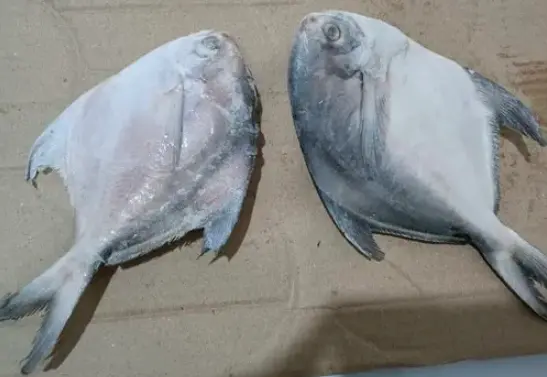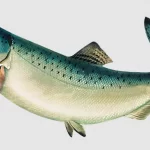Etta fish is an incredibly delectable and scrumptious type of catfish. Essentially, Etta Koori is the Malayalam name for catfish which is utilized as a neighbourhood name all over Kerala. Catfish are predominately freshwater fish, yet a few animal types are found in saltwater as well, e.g., hogfish.
Etta Fish (Magur Fish) – All You Should Know About It

There are in excess of 35,000 distinguished fish species in the world. A portion of the fish may be your number one in the event that you are a non-vegan. Fish has a high measure of sustenance and protein.
Among a large number of fish species, Mangur is one of the novel fish species on the planet. In this blog, we’ll investigate different fascinating realities about Mangur fish.
Classification of Magur fish.
- Kingdom: Animalia
- Phylum: Chordata
- Class: Actinopterygii
- Order: Siluriformes
- Family: Clariidae
- Genus: Clarias
- Species: Clarias batrachus.
Mangoor fish is a catfish. It doesn’t have a scale like different fishes. Etta fish is tracked down in lakes, freshwater, streams, lakes, and trenches. It is exceptionally nutritious. African magur has been a piece of African food for many years.
South America, Asia, and Africa are the home to the vast majority of the catfish species. Clarias catfish is regularly known as Mangur. It can likewise be composed of Magur or Mangoor. Clarias species is known to individuals through the different neighborhood names, for example.
- Magur fish in English: strolling catfish/catfish/freshwater catfish.
- Mangur fish in Hindi: magur maach/desi-mangur fish.
- Magur fish in Malayalam: thedu/etta.
- Magur fish in Karnataka: murgodu.
- Thailand magur: pla duk dan.
- Magur fish in Phillippines: hito.
- Magur fish in Indonesia: lele.
Magur catfish is generally tracked down in Pakistan, India, Sri Lanka, Bangladesh, Myanmar, Singapore, Indonesia and the Philippines. Magur fish can be little or large. Bigger assortments of mangur fish are called Muzhi while the more modest ones are called Kari.
Attributes of catfish
Magur fish can be recognized by other fish species in different ways. The first is, that it doesn’t have scales for that reason the skin is bare. They can involve their skin for cutaneous breath.
Magur is an air-breathing fish. Like different fishes, they can inhale through gills in the water. Strangely, the catfishes have the extra benefit of embellishment of air-breathing respiratory organs.
A bunch of expanded empty depressions is available simply over the gills, which enacts when the catfish ended up in the land.
Catfish can tumble themselves from one spot to another or lake to lake with the assistance of their pectoral fins. To that end, it has its moniker strolling catfish. Along these lines, it can get by ashore for quite a long time to a day.
Magur catfish have up to 8 barbels. Barbels are the bristle-like limbs present around the mouth of a fish. Two barbels of catfish are longer and stouter while the other is more modest. Barbels go about as a tangible organ and assist with identifying food sources.
It has paired fins (pectoral and pelvic) and unpaired fins (dorsal, butt-centric, and caudal).
The feeding habit of clarias magur is omnivorous. It can benefit from grasses and other sea-going weeds, waste, amphibian spineless creatures, and, surprisingly, the more modest fishes.
Catfish are benthic or bottom feeders. They love to harp on the floors of lakes or rivers.
Lake management for magur fish culture
On the off chance that you’re wanting to begin magur farming, you’re in good company. Magur fish is becoming famous among purchasers as its modest and nutritious also. These days mixture magur fish is well known for the commercial magur culture. Assuming you’re wanting to start magur fish cultivating, the accompanying boundaries ought to be thought of:
- Water profundity: 75cm-1m.
- Dike level: Water depth+1m from above water level (Dike level should be moderately high on the grounds that magur fish can get flop out of the lake.).
- Lake region: 200-1000m².
- Hatchling thickness: 200 fish for every m².
- Water temperature: 20-26°C (If the temperature succeeds 26°C neither the fish will eat nor develop.)
- Oxygen level: >3mg/l.
- Ammonia level: Less than 0.06mg/l.
- PH: 6.5-9.0.
Benefits of growing magur catfish
Magur fish is acquiring fame among producers. Aside from the great market interest, magur fish culture enjoys the accompanying benefits:
- The method of culture is simple. It requires less consideration when contrasted with different fishes. It tends to be filled in any type of water bodies viz. lakes or plastic lakes or enclosures and so forth.
- It can make due to an unfriendly climate like fewer degrees of oxygen and high-water temperature. It can endure contaminated water also.
- Magur fish is strong. It very well may be filled in high populace thickness contrasted with different fishes.
- Magur is less impacted by infections and pests.
- It can likewise make due in dry season or crisis water shortage conditions as it can get by as long as a day even without water through air-relaxing.
- It can likewise be refined with carp or tilapia fish in polyculture.
- Feeding magur is simple and advantageous as it is omnivorous and has broadened taking care of propensities. The feed transformation proportion (FCR) of magur fish is 1.5:1. which implies magur can change over 1.5Kg of info feed up to 1 Kg body weight.
Why magur fish is banned?
You may be astonished to hear that the magur fish culture is restricted in numerous nations. Notwithstanding this large number of previously mentioned benefits of magur fish, the main burden is that it disturbs the equilibrium of the amphibian biological system.
These omnivorous magur fish go after each and every sea-going species. Not all types of magur are not similarly obtrusive however the African catfish and Thai magur fish are restricted in numerous nations as a result of their very obtrusive nature.
Magur fish is prohibited in India starting around 2000 after a few destructive effects on native assortments of fish is accounted for. Ownership of walking catfish is restricted in many conditions of the USA including Florida.
Magur fish was presented in Nepal in 1996 from India and Bangladesh. Magur fish cultivation isn’t prohibited in Nepal however yet doesn’t have legitimate authorization. Individuals are developing magur catfish in many pieces of the nation and have a decent market interest too.
Magur fish cost goes from Rs 200-400 for every Kg in the Nepali market. It has been seen that the way of life of magur fish in Nepal has been expanded lately.
Conclusion
Magur fish is exceptionally nutritious for our wellbeing. 100 gm catfish contain 32 gm protein, 2gm fat, 0.7gm iron, 172mg calcium, 300mg phosphorus, and 66.3% water.
One normal confusion is that magur fish is prohibited in light of the fact that it could hurt our wellbeing. It is for sure valuable for our wellbeing. In any case, in the event that not refined and directed appropriately and assuming it interacts with normal water bodies it very well may be a danger to the aquatic ecosystem.
![50+ Fish Names In Tamil With Pictures [English Tamil Fish Names] Fish Names In Tamil With Pictures](https://thefishblog.com/wp-content/uploads/2022/08/Fish-Names-in-Tamil-150x150.webp)
![Rohu Fish In Malayalam [Name, Photos, Benefits, Price & Facts] Rohu Fish In Malayalam](https://thefishblog.com/wp-content/uploads/2022/08/Rohu-Fish-In-Malayalam.webp)


![Basa Fish In Bengali [Name, Photo, Price, Benefits & Risk] Basa Fish In Bengali Name](https://thefishblog.com/wp-content/uploads/2022/08/Basa-Fish-1-150x150.webp)


![Tuna Fish In Malayalam [Name, Benefits, Photos, Price & More] What is tuna fish in malayalam](https://thefishblog.com/wp-content/uploads/2022/08/Tuna-Fish-Photos-1.webp)